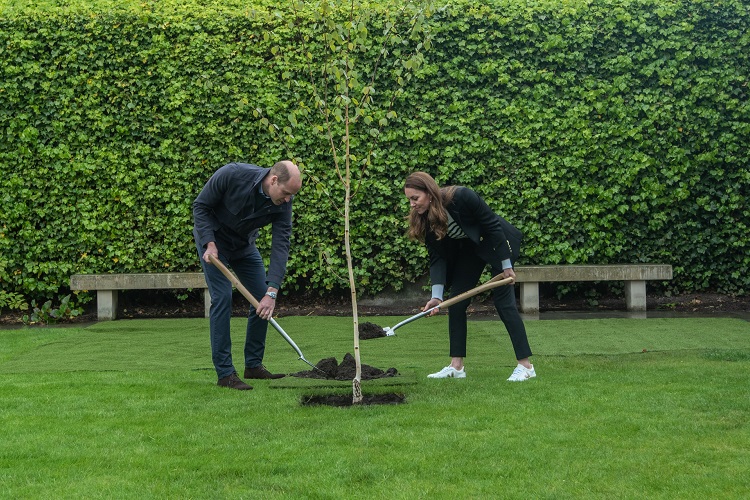St Andrews Forest plants new energy future
The University of St Andrews has launched the St Andrews Forest, a key part of its ambitious plans to become carbon net zero by 2035.
St Andrews graduates the Duke and Duchess of Cambridge planted the first tree in the iconic St Salvator’s Quadrangle at the heart of the University.
The first and only tree to be planted in the ancient quadrangle, it occupies a central position symbolic of the importance of sustainability to the University’s future.

From here, the Forest project will branch out across the globe with the University’s alumni across the world invited to plant a tree. As well as encouraging individuals to plant trees, the project will also include creating mini Miyawaki-style forests and partnering with landowners to plant woodland.
The idea for a global woodland to offset carbon emissions originated from students as a way of offsetting emissions from student travel, which generates around 20,000 tons of carbon each year.
The University has set a target of carbon net zero by 2035, ten years ahead of the Scottish Government’s 2045 target.
St Andrews Principal Professor Sally Mapstone said: “None of us can ignore climate change. Each of us individually and all of us collectively can take the actions that cumulatively will make a difference in approaching what is the existential challenge of our time.
“The University of St Andrews is a world-leading university and we see it as our willing responsibility to integrate sustainability within our strategy. We want to be known as a University which practises what it preaches and puts sustainability at the heart of its operations.
“The St Andrews Forest is the brainchild of our students who are as committed as we are to making a difference. The aim is to create a tapestry of woodland across the world – from an individual tree in your backyard to the planting of woodland such as the generous contribution of our alumni Tim and Kim Allan in Clackmannanshire.”
Student Deanna Coleman, who was instrumental in driving the St Andrews Forest project, said: “The University offers tremendous opportunity for students around the world to study here, however, that comes at the cost of our carbon footprint.
“The St Andrews Forest will provide a very special opportunity to offset that carbon. We can’t ask students to row across the Atlantic Ocean or cycle from Asia so what we are proposing is to carbon offset these emissions until renewable energy catches up.”
St Andrews alumni, friends and supporters are being asked to support the Forest initiative by planting trees across the globe, and signing up to a crowdfunding effort to help maximise the impact of the ambitious carbon reduction scheme.
Alumni Tim and Kim Allan have set aside land at their farm in Clackmannanshire to plant trees as part of the project. Tim said: “The St Andrews Forest initiative is extraordinarily important to myself and my wife, both of whom are alumni of the University.
“The Forest is an opportunity for the University to lead the world in carbon sequestration. Our involvement with the Forest has been one of the most rewarding partnerships with the University as it allows us to make a real practical difference.”
Future initiatives as part of the Forest aim to include restoration of peatlands, saltmarshes and mangroves.
St Andrews alumni and supporters across the world have been invited to plant their piece of the St Andrews Forest in every corner of the globe.
The St Andrews Forest is planned to offset student travel to the academic year, i.e., to study, and not ‘student travel’ in a general sense. The 20,000 tonnes relates only to travel to the academic year (two return journeys – flights and public transport – for each student from home to St Andrews, including UK students).
For more information on the St Andrews Forest, or to discuss collaboration, please email [email protected].
Issued by the University of St Andrews Communications Office.